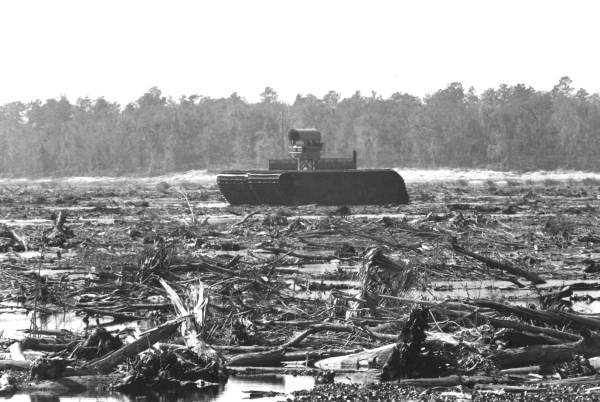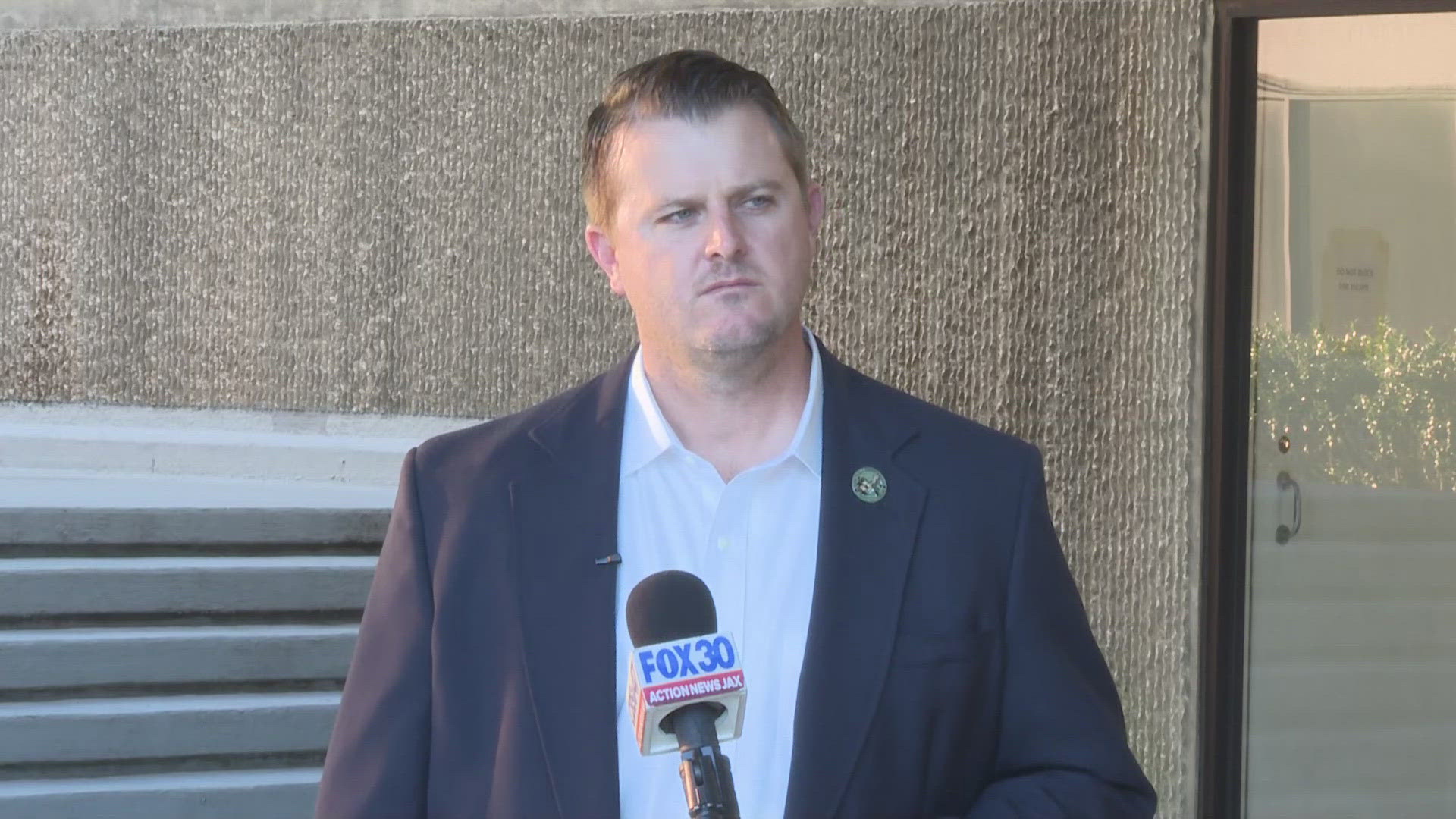EUREKA, Fla. — It has the dubious distinction of being the largest unfinished public works project in U.S. history.
The Cross Florida Barge Canal was intended to literally cut a path across the state – from Jacksonville to the Gulf of Mexico – through a series of manmade canals, natural rivers, and dams.
It was pitched as an economic development boon, but the soft soils of the state turned it into a logistical quagmire. President Richard Nixon pulled the plug on the partially finished project in 1971, but marks of it remain, including the dam in Putnam County that keeps the Rodman Reservoir in place.
Every three or four years, the man-made lake is deliberately drained. The periodic drawdowns offer a rare glimpse of what's there – and what some hope it could again become.
Captain Erika Ritter grew up on the Ocklawaha River, the winding, scenic waterway that was picked to become the central leg of the Cross Florida Barge Canal. She has a picture of herself, age 12, standing in front of the massive "crusher-crawler," a 300-ton monster used to smash a hardwood forests in the path of the canal.
"Everything was annihilated," recalls Ritter. "At first, you could barely see a crane coming though [the treetops], and a week later it was all down to sand."
Today, Ritter gives guided tours of the Reservoir. When full, the lake is a flat expanse prized by bass fishermen. But every few years, it must be drained for maintenance, in order to prevent fish kills. The periodic drawdown exposes what lies beneath -- 8000 acres of flooded forest, stumps rotted off at the pool's high water mark.
It also reveals some of the 20 naturally occurring freshwater springs, suppressed by the weight of 21 billion gallons of water held back by the dam.
The most recent drawdown began in September, but a trip up river away from the dam shows how quickly the Ocklawaha begins to bounce back. At first the plant life is waterlogged and sickly – palms with meager tufts, cypress trees with more Spanish moss than autonomous leaves.
Even healthy trees are scarred with a water mark several feet up their trunk. But by stages, during the 21 winding river miles from Rodman Reservoir to Eureka, the landscape grows greener and fuller. Wood stork and limpkin poke through the damp earth, and native vegetation like water lettuce and spatter dock skirt the visibly healthier forests.
St. Johns Riverkeeper Lisa Rinaman is an advocate of breaching the dam and allowing the Ocklawaha to return to its natural state. That's not surprising, since the Ocklawaha is the largest tributary to the St. Johns, and increased flow would help Jacksonville's signature river.
But hers is not a position espoused by environmentalists alone. Both federal and state regulators think restoration as overdue; as far back as 2001, the state Department of Environmental Protection said the river should be restored "immediately." More recently, the issue brought together a broad alliance including the Jacksonville Chamber of Commerce and JaxPort, who thought the restoration would offset damage from the port's planned 11 mile dredging of the St. Johns River.
The most recent push to restore the Ocklawaha fell apart, largely due to the strenuous opposition from locals, like Putnam County Commissioner Larry Harvey. He worries the loss of the reservoir would hurt the poor county's fragile economy. "This is our house," the former chair of Save Rodman Reservoir told First Coast News. "We don't want to be told by other people what we need to do here."
Reservoir fisherman Richard Jones agrees. "We did not ask for it to be here, it's just here. Now that it's here kind of enjoy it. We have a lot of vegetation out there for fish to grow up, and get big and use this side to catch fish."
Rinaman believes that the natural system would be healthier, and would ultimately be a better resource for fisherman. She compares the man-made lake to a goldfish bowl, one prone to fish kills if not emptied every few years. "The pool has never functioned as a natural ecosystem," she says. "It takes a high degree of maintenance and taxpayer expense."
But the best argument for allowing the river to resume its shape may be the relentless march of nature to reclaim it. Despite the devastation wrought by the dam, most research suggests it would take just 10 years to reestablish a healthy tree canopy.
"At every stage it's a thriving ecosystem," says Rinaman. "You can literally watch and document nature restoring itself."


